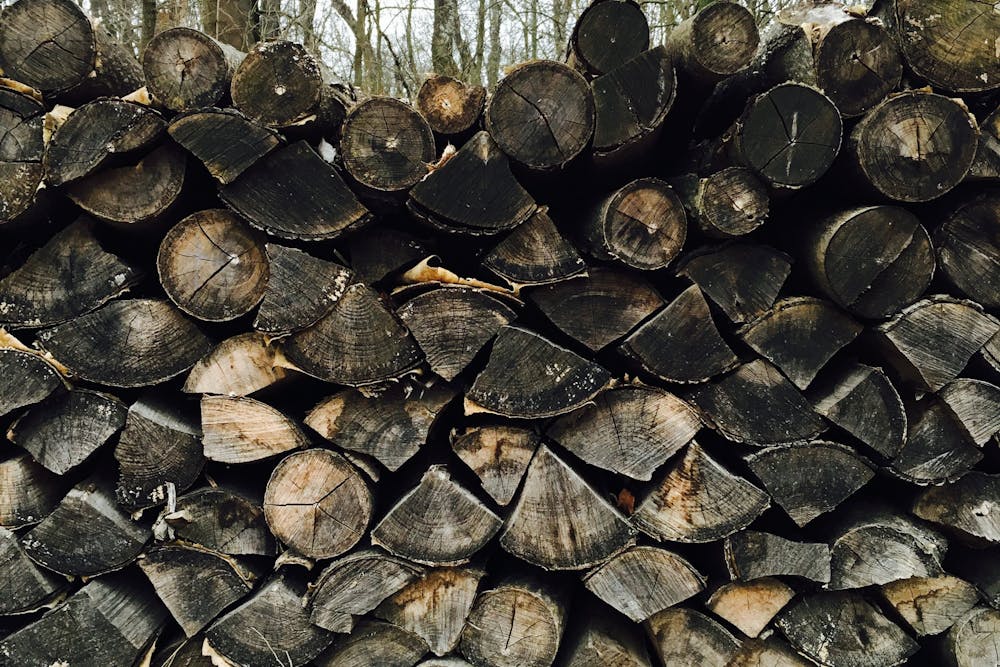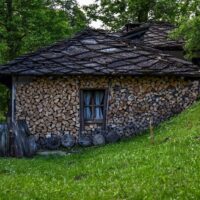Heating a home with firewood is one of the oldest and most sustainable methods of staying warm. In a world increasingly focused on eco-friendly solutions, wood heating is gaining popularity for its cost-effectiveness and natural appeal. However, understanding exactly how much firewood is required to effectively heat a house depends on various factors. From home size and insulation to the type of wood and climate, every detail plays a role in ensuring a cozy and efficient winter season.
Factors influencing the amount of firewood required
Several factors determine how much firewood is needed to keep a house warm during the heating season. The first and most apparent aspect is the size of the home. A larger home requires more energy to heat, translating into higher wood consumption. For example, a 100 m² house might need around 5–7 m³ of wood per heating season, while a 200 m² home could demand up to 14 m³.
Another key factor is the quality of the house’s thermal insulation. Homes with modern insulation materials and sealed windows typically use less wood compared to older, poorly insulated houses. In fact, well-insulated homes can reduce wood consumption by as much as 40%. Energy-efficient homes built to modern standards may require significantly less fuel, while older homes might double the amount needed.
Additionally, the type of heating system plays a crucial role. A traditional fireplace may heat only a single room, leading to inefficiencies. Conversely, systems such as wood stoves or fireplaces with water jackets distribute heat evenly throughout the house, making wood usage more efficient.
Finally, the type and quality of firewood are critical. Hardwoods like oak and beech are denser and have higher calorific values, burning longer and producing more heat than softwoods like pine or spruce. The moisture content of the wood also affects its efficiency. Seasoned wood with less than 20% moisture burns hotter and cleaner than freshly cut or damp wood, which wastes energy evaporating water.
How to calculate the amount of firewood needed for your home
Determining the exact amount of firewood required for heating involves a few calculations based on your home’s energy needs. First, calculate your home’s annual energy demand. This figure, expressed in kWh/m²/year, depends on the building’s size and energy efficiency. For instance, a 150 m² home with an energy requirement of 100 kWh/m²/year will need about 15,000 kWh of heat over the heating season.
Next, consider the calorific value of your chosen wood. Hardwoods such as oak or beech deliver around 2,000 kWh per cubic meter. Using this value, divide your home’s total energy demand by the calorific value of the wood:
- 15,000 kWh ÷ 2,000 kWh/m³ = 7.5 m³
This calculation shows that 7.5 m³ of seasoned hardwood is needed for a 150 m² home. It’s also wise to account for system inefficiencies. Wood stoves, for example, typically operate at 70% efficiency, so the actual wood needed might be slightly higher.
Lastly, consider your burning habits. If you heat your home only in the evenings or weekends, your consumption will differ from someone who maintains a continuous fire. By carefully assessing these variables, you can estimate your firewood needs and avoid running short during the colder months.
The benefits of heating your home with firewood
Using firewood as a primary or supplementary heating source offers numerous advantages. One of the most compelling reasons to choose wood is its status as a renewable energy source. Unlike fossil fuels, which deplete finite natural reserves, wood can be sustainably harvested, ensuring a consistent supply when forests are managed responsibly. By opting for firewood, you contribute to reducing carbon emissions, as burning wood emits only as much CO₂ as the tree absorbed during its growth, making it a carbon-neutral option.
Another benefit lies in the economic aspect. Depending on your location, firewood is often more affordable than alternatives like gas, oil, or electricity. Households in rural areas with access to local wood suppliers can significantly reduce heating costs by purchasing in bulk or cutting and seasoning their own wood. Moreover, if you plan your purchases strategically, such as buying wood off-season, you can further minimize expenses.
Heating with firewood also creates a unique ambiance that modern systems cannot replicate. The warmth from a wood-burning stove or fireplace feels more organic and radiates a comforting glow that turns any room into a cozy retreat. For many, the crackling sound of logs and the sight of dancing flames are a quintessential part of winter.
Environmental and economic benefits aside, firewood provides a level of energy independence. With rising utility prices and unpredictable energy markets, having your supply of wood ensures you remain unaffected by external factors. In emergencies, such as power outages, a wood-burning system can continue to provide warmth when other heating systems fail.
Choosing the best firewood for optimal heating
Selecting the right firewood is crucial for efficient and effective heating. Hardwoods, such as oak, beech, and ash, are the top choices for most homeowners due to their high calorific value and long-burning properties. Here’s a guide to help you pick the best wood:
- Hardwoods vs. Softwoods: Hardwoods are denser and burn slower, making them ideal for prolonged heating. Softwoods, such as pine and fir, ignite quickly but burn faster, making them suitable for starting fires or short bursts of heat.
- Moisture Content: Seasoned wood with a moisture level below 20% is essential. Wet wood produces less heat, creates excessive smoke, and leads to creosote buildup in chimneys, which can become a fire hazard.
- Wood Quality: Choose clean, solid logs without signs of rot or mold. Avoid wood treated with chemicals, as burning it can release harmful toxins into your home and the environment.
Proper storage is another factor in maintaining firewood quality. Wood should be stacked in a well-ventilated area, protected from direct rain and ground moisture. Use pallets or wooden planks to keep logs off the ground, and ensure they are stacked loosely to allow air circulation. Covering the top of the pile with a tarp or roofing material will further prevent wetness while allowing the sides to breathe.
Finally, consider buying your wood well in advance to season it yourself. While this requires more effort and planning, it ensures that your firewood reaches the ideal dryness level, maximizing its heating potential and value.









